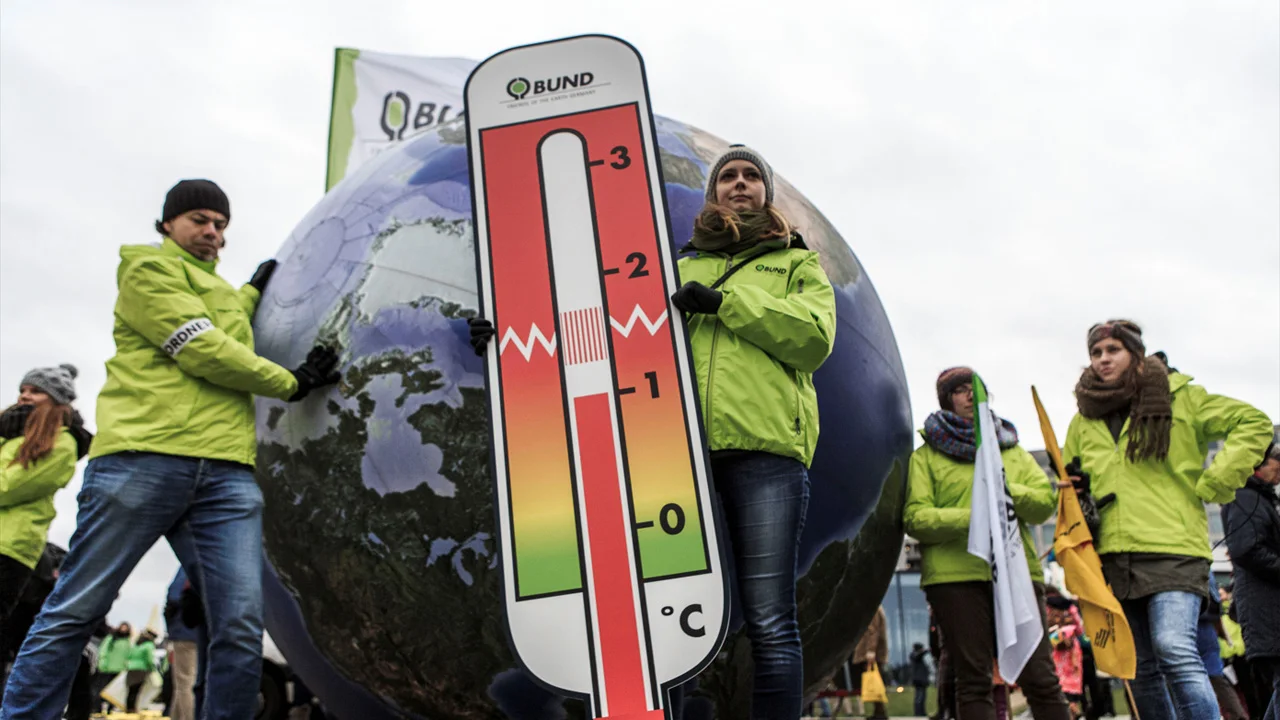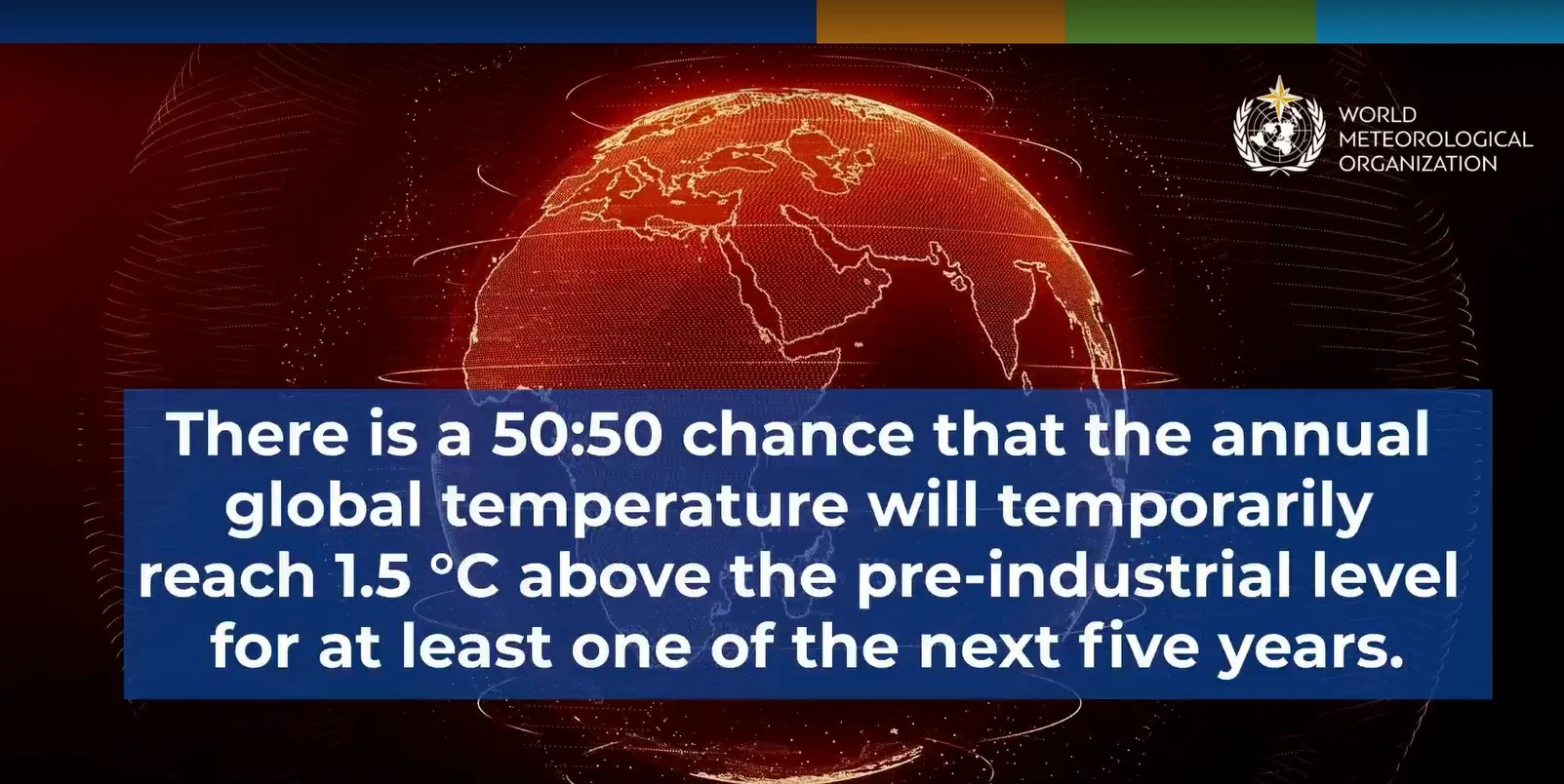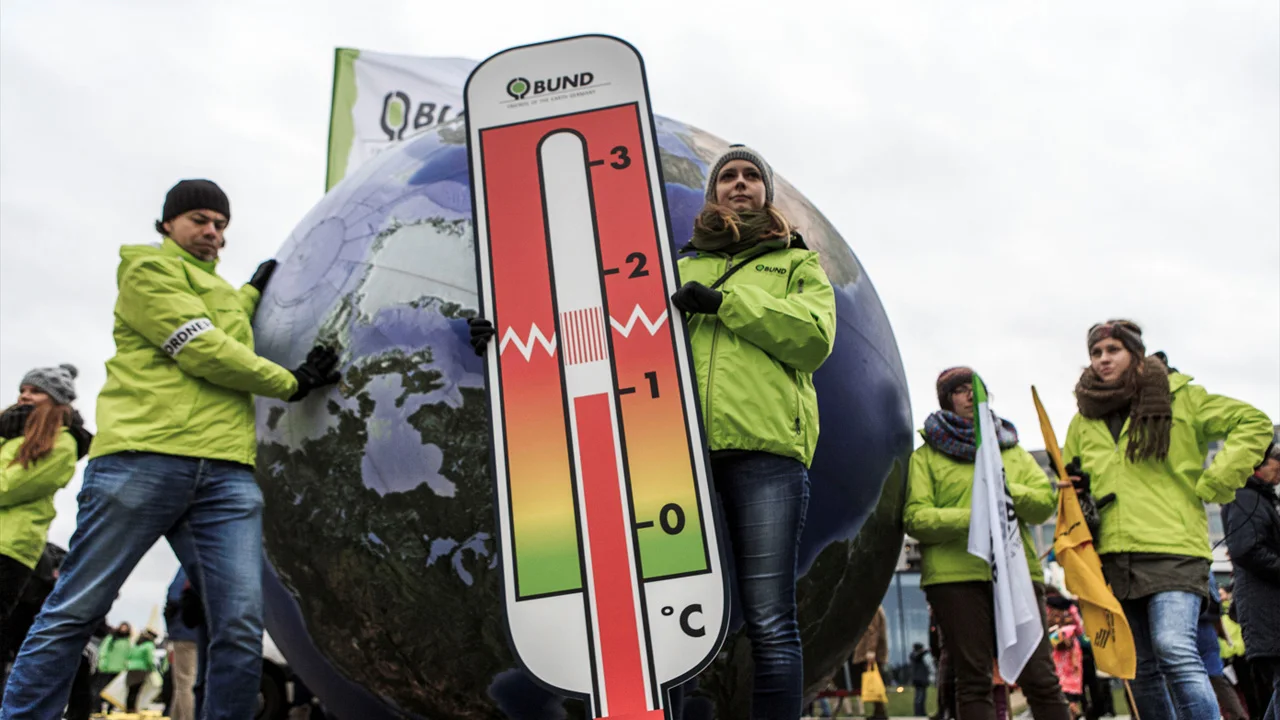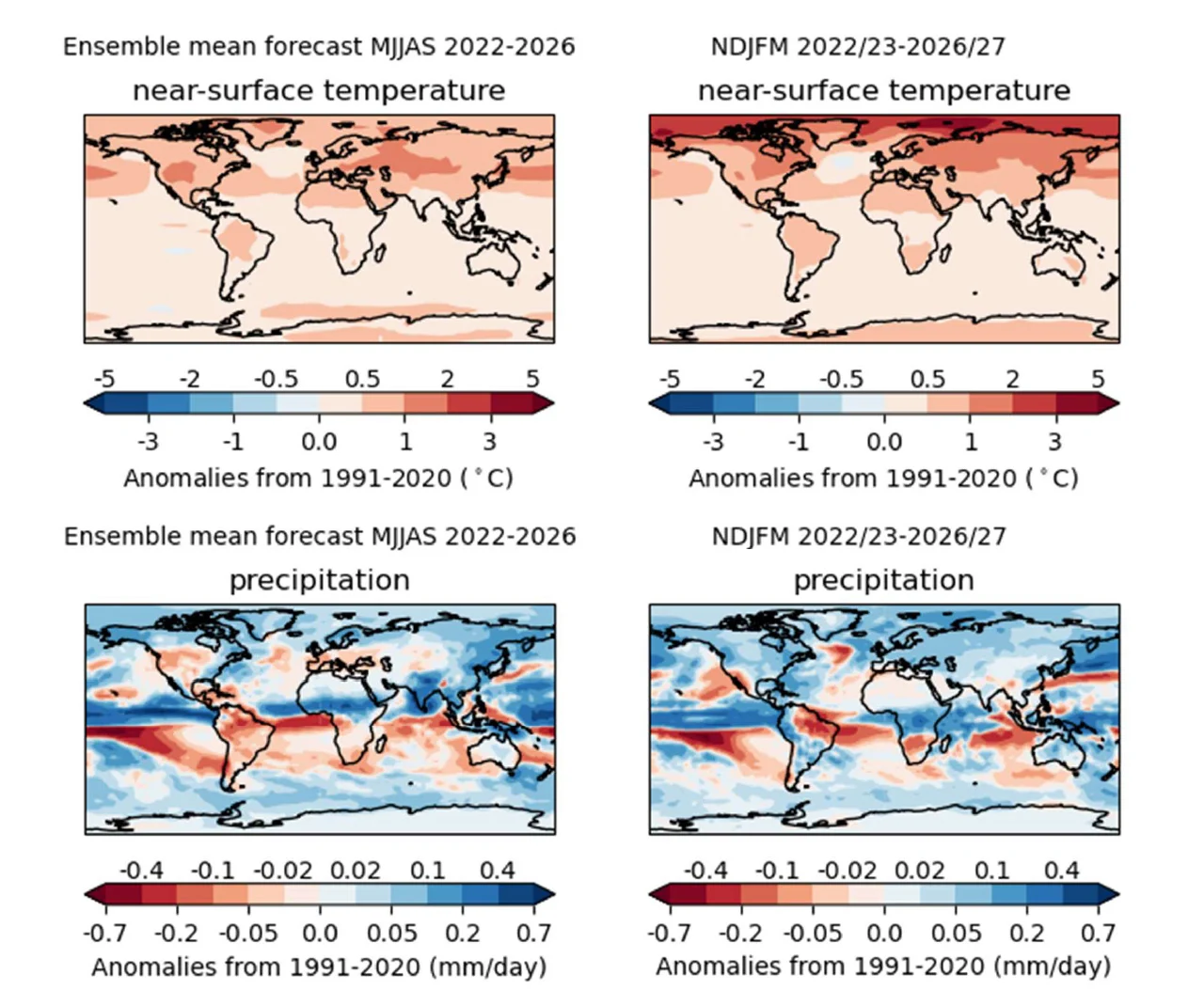
There is now a 50-50 chance the globe will exceed 1.5C by 2026
The world is so close to temporarily breaching 1.5°C, it may come down to a coin-flip over the next five years.
According to a new report, between now and 2026, it is almost certain that we will see a new warmest year on record, and compared to the last five years, the chances of global temperatures temporarily exceeding the 1.5°C goal of the Paris Agreement have risen five-fold.
This week, the World Meteorological Organization and the UK Met Office released their latest Global Annual to Decadal Climate Update — a yearly report that examines the near-term climate forecast for the globe, looking ahead for the next five years.
The report goes on to note, from 2022-2026, yearly global average temperatures are predicted to be between 1.1°C and 1.7°C. Based on that, it is almost certain (93 per cent chance) that the entire five-year period will be warmer than the previous five years (2017-2021). There is also a 93 per cent chance that at least one year in that period will replace 2016 as the warmest year on record.

(WMO)
In addition, the forecast includes a nearly 50:50 chance that the annual global average temperature anomaly will exceed 1.5°C during at least one year before 2026.
"This study shows — with a high level of scientific skill — that we are getting measurably closer to temporarily reaching the lower target of the Paris Agreement on Climate Change," Professor Petteri Taalas, the Secretary-General of the World Meteorological Organization, stated in a press release on Monday.
"The 1.5°C figure is not some random statistic. It is rather an indicator of the point at which climate impacts will become increasingly harmful for people and indeed the entire planet," Taalas added.
A 48 per cent chance is not very high. However, during the past five years (2017-2021) there was only a 10 per cent chance of seeing global temperatures rise that high. So, the probability of temporarily exceeding this goal of the Paris Agreement has now increased nearly five-fold.

During the Global Climate March in Berlin, Germany on November 29, 2015, activists display a global thermometer with a stark warning for us to stay below 1.5°C. (Carsten Koall/Getty Images)
"A single year of exceedance above 1.5°C does not mean we have breached the iconic threshold of the Paris Agreement, but it does reveal that we are edging ever closer to a situation where 1.5°C could be exceeded for an extended period," Dr. Leon Hermanson, the lead researcher of the report, explained in a UK Met Office statement.
The Global Annual to Decadal Climate Updates, which are led by the UK Met Office, are the product of 18 different organizations from around the world, including the Canadian Centre for Climate Modelling and Analysis.
For much of Canada, predictions from the report show a general increase in both temperature and precipitation amounts throughout the year. The exception is in the southern Prairies and southern British Columbia. These regions are expected to have warmer, drier summers over the next five years. This could have impacts on water availability, agriculture, and wildfires.

These forecast maps, compiled from the Global Annual to Decadal Climate Update, show temperature anomalies (top row) and precipitation anomalies (bottom row), from May through September (left column) and November through March (right column), between 2022-2026. (WMO/UK Met Office)
In other parts of the world, Europe is more likely to suffer through drier summers over the next five years, and drier than normal conditions are expected to impact the Amazon and southern Africa year-round. The most extreme temperature anomalies are forecasted to occur across the Arctic, where it is likely to be more than three times as warm as the global average between now and 2026.
"For as long as we continue to emit greenhouse gases, temperatures will continue to rise," Taalas said. "And alongside that, our oceans will continue to become warmer and more acidic, sea ice and glaciers will continue to melt, sea level will continue to rise and our weather will become more extreme. Arctic warming is disproportionately high and what happens in the Arctic affects all of us."












